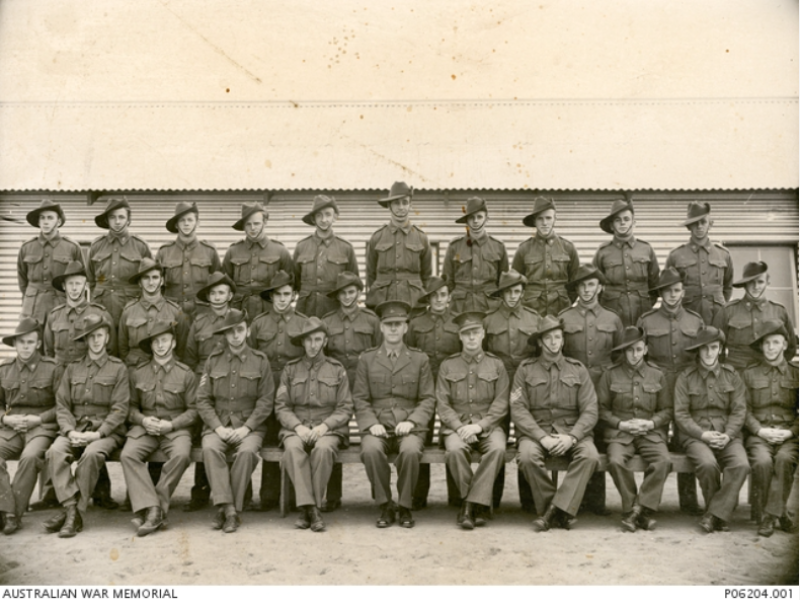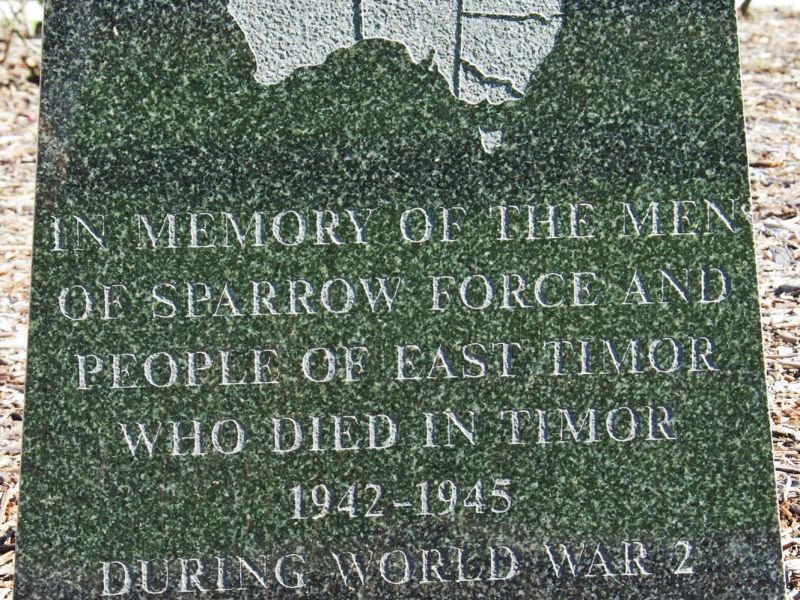Private Leslie Albert Allen, 2/40th Australian Infantry Battalion
Leslie “Barney” Allen was born at Sisters Creek, Tasmania on 24 September 1918, the eldest son of Albert and Ruby Allen.
He grew up in Myalla, a small rural community in north-west Tasmania.
Allen enlisted on 28 June 1940 at Launceston to the 2/40th Battalion, the only battalion in the AIF recruited almost entirely from Tasmania. They assembled at Brighton Camp in July 1940 for training.
In December, Allen married his sweetheart, Leah Poke, at Myalla. A son, Barry Allen, followed later.
Once Japan started attacking the Asia–Pacific region in early December 1941, the 2/40th was rushed to Timor. It departed Darwin on 10 December, arriving at Koepang two days later. The 2/40th formed the bulk of “Sparrow Force”, which defended the airfield at Penfui, base for the Hudson bombers of 2 Squadron, RAAF.
Sparrow Force was ill-equipped and likely to be overwhelmed by enemy attack. Its commanding officer, Lieutenant Colonel William Leggatt, made repeated requests for greater reinforcement, artillery, and supplies, which were never met.
Japanese air attacks on Timor began in late January. No. 2 Squadron withdrew to Australia on 19 February, and the Japanese attack began the next morning.
Faced with a strong advance from the south, Sparrow Force destroyed the airfield and began to move inland. The small force battled its way along the road overcoming several Japanese positions.
By the morning of 23 February, however, the odds against Sparrow Force were mounting. Food, water, and ammunition were running out, casualties were mounting, and the large Japanese force was closing on its rear.
After the Japanese delivered an ultimatum to surrender or be bombed, the bulk of the 2/40th Battalion, including Private Leslie Allen, became prisoners of war.
They spent seven months interned at a camp at Usapa Besar. Lax security allowed men to slip out of camps to forage and gather intelligence. The prisoners were then shipped to Java in September, and would spend the rest of the war in camps in Java, Burma, Thailand, Japan, Singapore and Sumatra.
The most dangerous period for POWs was during transportation. Those who went by sea suffered overcrowding, sickness and disease on transport ships known as “hellships”. There was little food, water or sanitation. Another threat was Allied submarines.
On 3 June 1944, a large convoy of 19 vessels including the Tamahoko Maru left Singapore. It loaded cargo at Manila and Takao before heading to Moji. On 24 June 1944, with the lights of Japan in sight, the Tamahoko Maru was torpedoed by an American submarine.
Hundreds of prisoners jumped into the sea as it started to sink. Some were later picked up by a Japanese whale chaser but over 550 died. Among the dead was Leslie Allen, 25 years old.
Today Allen is commemorated on the Singapore Memorial, along with 24,000 Commonwealth soldiers who died in Malaya and Indonesia with no known grave.
Duncan Beard, Editor, Military History Section
Image: Members of the 2/40th Battalion at Brighton Army Camp prior to embarkation for service overseas, 1941

 Australian War Memorial
Australian War Memorial